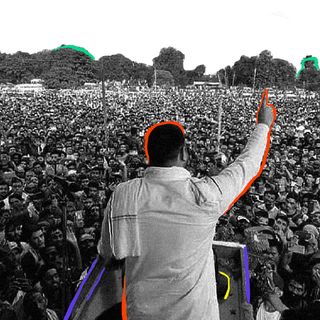
India’s Rich Outlive the Poor by 7.5 Years Due to Health Inequalities: Oxfam Report
During the second Covid19 wave, rural areas witnessed a shortage of tests, oxygen, and hospital beds, highlighting the divide.

According to a new report, there are considerable differences in life expectancy among different groups, owing to inequalities in access to quality healthcare. Published yesterday, the report described its findings as an insight into the “social gradient in health.”
Oxfam’s Inequality Report 2021: India’s Unequal Healthcare Story, which analyzed data from the National Family Health Survey and the National Sample Survey, relied on five broad indicators — gender, geography, wealth groups, social groups, and religion — to assess inequalities in India’s healthcare system.
The findings by Oxfam, an international non-profit group, concluded that the “general category is better off than the SCs and STs, Hindus are better off than Muslims, the rich are better off than the poor, men are better off than women, and the urban population is better off than the rural population.”
According to the report, the economically richer population outlives the economically disadvantaged population by 7.5 years. And in terms of caste-based inequalities, an upper-caste woman outlives a Dalit woman by 15 years.
Related on The Swaddle:
Children from Scheduled Castes, Tribes More Likely to Die Before Age 5
The inequality in health outcomes — and subsequently lifespan — for the less privileged begins at birth itself. The infant mortality rate, or the number of deaths per 1,000 live births of children under one year of age, is about 20% for the rich and more than 55% for the poor, according to the report.
The Covid19 pandemic also highlighted the impact of socio-economic inequalities on people’s health outcomes, with rural areas witnessing a shortage of tests, oxygen, and hospital beds — especially during the second wave earlier this year. “Persistent underfunding of public health system especially primary health care and inadequate health infrastructure in India remain to be addressed by the government even after [the] devastating second wave,” Amitabh Behar, CEO of Oxfam India, told the press, adding that “otherwise, health emergencies will only aggravate existing inequalities and work as a detriment for the poor and the marginalized.”
This is especially alarming in the face of statistics suggesting that high costs of healthcare lead many to incur debt — pushing as many as 63 million people into poverty in India every year. India’s expenditure on healthcare has been found to be the lowest among BRICS countries (consisting of five emerging economies: Brazil, Russia, India, China, and South Africa). This leaves economically disadvantaged groups with two options: “using sub-optimal/weak public healthcare, or expensive private healthcare,” as The Print stated. The former jeopardizes their health; the latter jeopardizes their economic prospects.
Another factor that influences this massive disparity in lifespans is sanitation. By reducing people’s exposure to pathogens, sanitation protects human health, increases lifespans, and boosts productivity as well. However, just like access to quality healthcare, quality sanitation, too, is a privilege in India. “While 93.4% of households in the top 20% [of the country’s economic bracket] have access to improved sanitation, only 6% have access in the bottom 20%,” the report stated — highlighting a stark difference of more than 85%. So, not only do less-privileged groups in India have poorer access to healthcare, they’re also more vulnerable to conditions that require healthcare. They do not have access to either cure, or the means to prevent diseases.
Related on The Swaddle:
Covid19 Pandemic Can Throw Half a Billion People Into Poverty: Oxfam
However, there is some hope. Between 2015-2016, the number of institutional deliveries (or deliveries at medical facilities, or under supervision by skilled medical personnel) increased significantly in India, which could bring down the infant mortality rate, besides ensuring better care for mothers. The rates of immunization, too, have gone up since 2015.
Unfortunately, the pandemic may have undone some of this progress. Compared to vaccination rates in pre-pandemic times, an additional 15 lakh children in India missed their routine vaccinations against diphtheria, tetanus, measles, and other preventable infections due to disruptions caused by the pandemic, according to the World Health Organization, which warned last week that the missed immunization may increase the risk of outbreaks and deaths in the coming years. Moreover, lack of pre‑natal, hospital care also left several pregnant women across the country helpless during lockdown last year, The Swaddle reported.
Even as we continue to figure out ways to undo the damage caused by Covid19, it’s important to address the gaps in healthcare that have existed for decades — especially in the aftermath of the pandemic that highlighted the disparities. “Declaring health as a constitutional right can help to bridge these gaps,” Behar noted.
Devrupa Rakshit is an Associate Editor at The Swaddle. She is a lawyer by education, a poet by accident, a painter by shaukh, and autistic by birth. You can find her on Instagram @devruparakshit.
Related


Women Are Less Likely Than Men to Regain Employment Post Covid19: ILO Report
